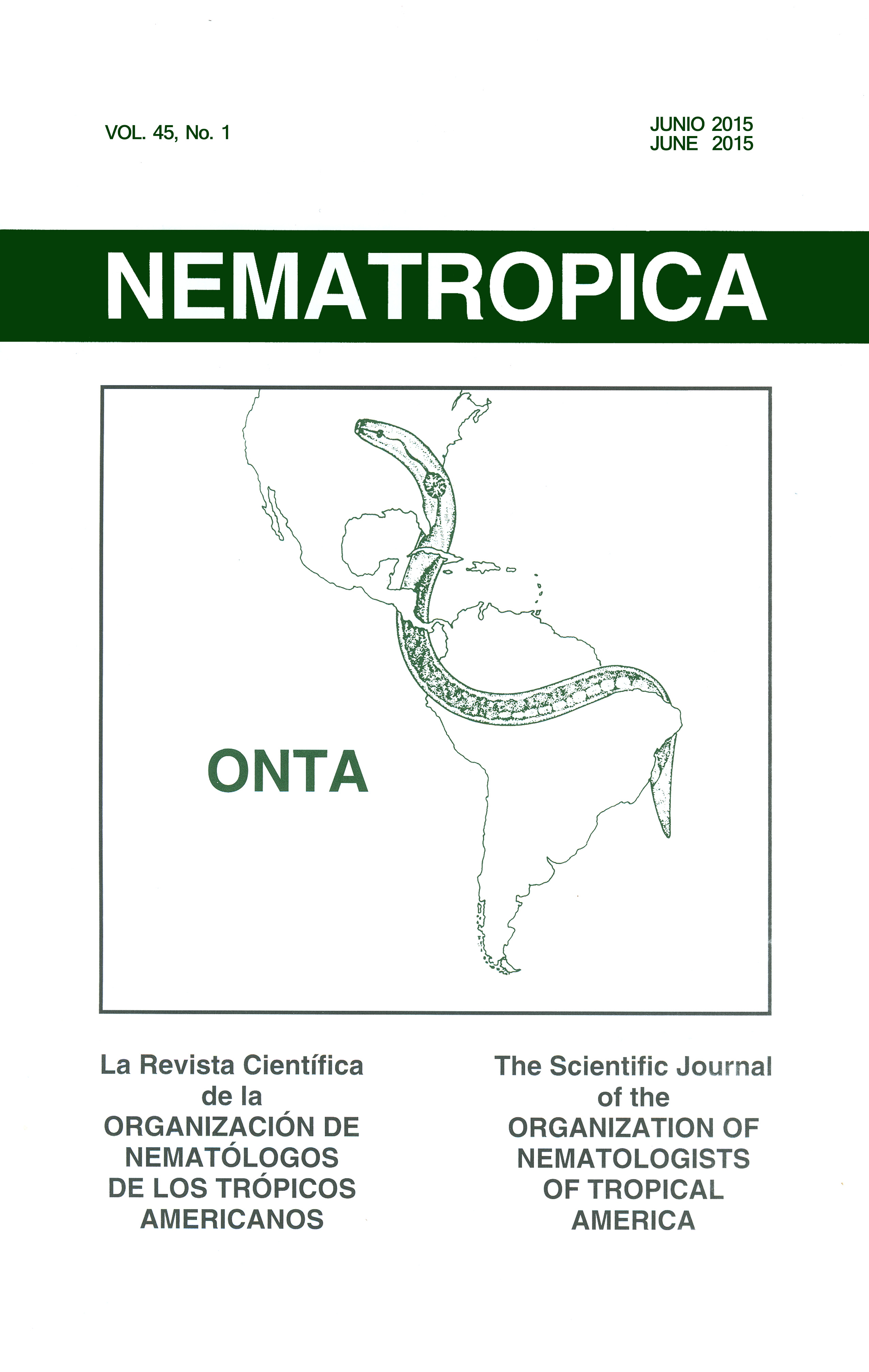EFECTO DEL FLUENSULFONE SOBRE LA MOVILIDAD IN VITRO, Y LA REPRODUCCIÓN Y AGALLAMIENTO DE NACOBBUS ABERRANSEN MICROPARCELAS
Keywords:
chemical control, Dichloropropene chloropicrin, fluensulfone, fluoroalkenylAbstract
The effect of fluensulfone on juveniles (J2) of N. aberrans in vitro and greenhouse conditions in tomato and cucumber crops was evaluated. Within assays in vitro, nine concentrations of fluensulfone and one of oxamyl were assessed, and the percentage of immobile nematodes at 24 hr after exposure were determined. In greenhouse bioassay, fluensulfone dosages of 1 and 2 L.ha-1, oxamyl at 4 L.ha-1, and one of dichloropropene + chloropicrin (DC+CP) (300 L.ha-1) were evaluated under microplots of both tomato and cucumber. All treatments were distributed under a completely randomized design with three replications. At 60 d after transplanting (DAT), nematode population density, reproduction rate, invasion, galling, and five agronomic variables (growth, yield,
etc.) were assessed. The fluensulfone had a significant effect (P = 0.0001) on the mobility of juveniles of N. aberrans. At 24 hr, 100% of the nematodes were immobilized at a concentration of 288 ppm, with a LC50 of 109.2 ppm. Nematode population density, reproduction rate, and root galling of N. aberranswere significantly reduced by fluensulfone applications in tomato and cucumber, with values similar to those observed in those treated plants
with DC + CP . Less root galling was obtained with the applications of DC + CP and fluensulfone (2 L.ha-1), with a control of 98 and 91%, respectively compared to the untreated plants. The pre-transplant nematicide application
had a significant effect on growth and development of tomato and cucumber plants (P = 0.0001). Tomato fruit yield (total weight fruits/plant) increased by 38 and 48.8% with DC + CP and fluensulfone (2 L.ha-1) treatments as compared to untreated microplots. In cucumber, fruit yield increased favorably with oxamyl applications and fluensulfone (1 L.ha-1). A discussion is included considering fluensulfone use in tomato and cucumber crops affected by N. aberransas a good alternative to methyl bromide and other non-fumigant nematicides.

